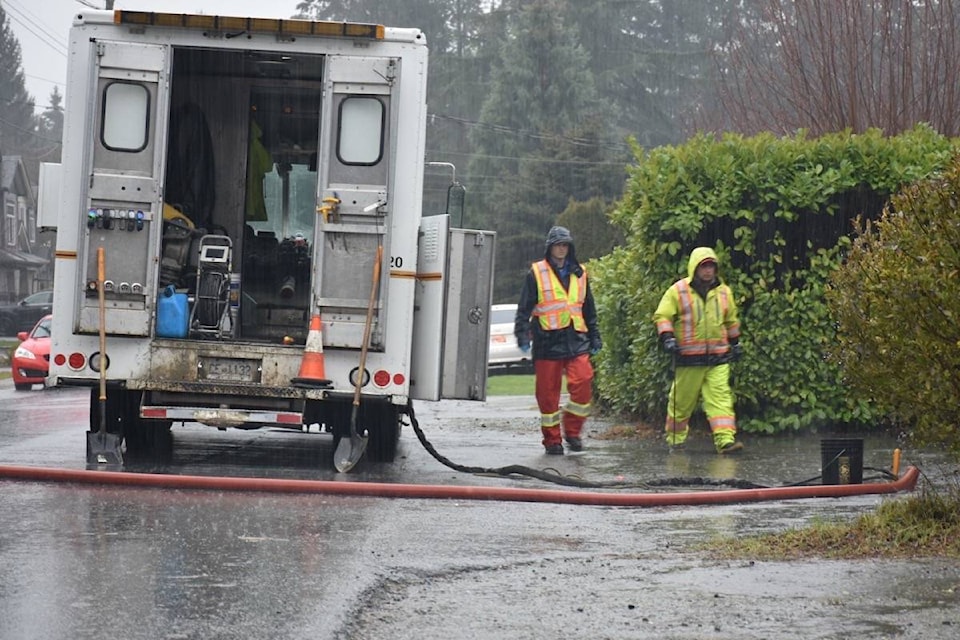For B.C. Hydro, the storm that lashed the southern coast on Dec. 20 was the worst in its history.
Winds of up 100 kilometres hit and hundreds of homes went dark for hours as trees toppled on to roadways and ripped down powerlines, adding up to a cost to the City of Maple Ridge of about $120,000.
“In total, we ended up with 40 road closures due to wires,” said James Storey, director of engineering operations.
The roads had to stay closed until B.C. Hydro crews arrived to do the repairs.
But some people who were desperate to get home ignored or removed barricades, putting themselves and others at risk of electrocution.
“We had to go back and revisit a number of sites a number of times to put the barricades back up because people were just pushing them over, pushing them out of the way, just driving around, driving through them,” Storey said.
“It’s unfortunate. It’s not a chance you really should be taking.”
Storey said it cost the city about $50,000 for extra public works crews and material to respond and about another $20,000 to pay for flag people who directed traffic around the hazards.
David Boag, Maple Ridge’s director of parks and facilities, said that almost 60 trees were blown down by the wind in Thornhill, Allco, Reiboldt and Albion parks. Maple Ridge Park and Fairview Park also had trees damaged.
After clearing away the hazards, rec crews now are cleanup mode, re-opening trails. He estimated however that the total cost in labour, equipment and contractors to the parks department would be more than $30,000.
The city could be eligible to claim most of that cost from Emergency Management B.C.
City crews made quick work of the debris, either pushing it off the side of roads or hauling it to the city dump, or chipping trees and branches on site for use as compost mulch.
Storey said Kanaka Way and Tamarack Lane and roads in Whonnock caused the most problems with downed trees.
Twenty-four public works personnel were out on the streets that day and the following Friday trying to keep the roads clear.
In total, the city received 190 calls about downed trees or wires. That’s almost double the 100 or so calls that came in during the August 2015 wind storm, Storey said.
“It’s the biggest since I’ve been here. It’s the biggest event of this type that people here remember,” he added.
The city ended up actually making 148 visits in response to calls about storm damage on Dec. 20.
“We attended every one of those 148 sites and made every one of them safe by nine o’clock.”
He said previous events and practice sped up the city’s response.
A major concern was keeping water and sewer pump stations operating when power was cut. With widespread power outages, emergency generators had to keep the water and sewage flowing. Most of those have on-site generators.
“We test them monthly, to make sure they work. It pays off,” Storey said.
As well, all traffic lights in the city were on battery backup to allow them to keep operating. Battery backup will last about eight hours.
“It was a big event, but we fared quite well. Our response was much better than it was in 2015.”
Pitt Meadows didn’t feel the effects of the Dec. 20 storm as much as Maple Ridge.
“It wasn’t as bad for us as it was for others,” said Randy Evans, manager of parks and recreation.
He didn’t have an estimate on the cleanup costs, saying only three roads were closed.
